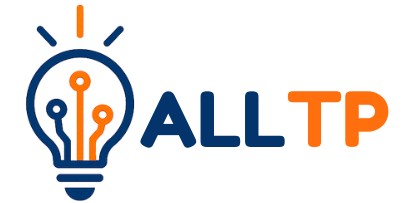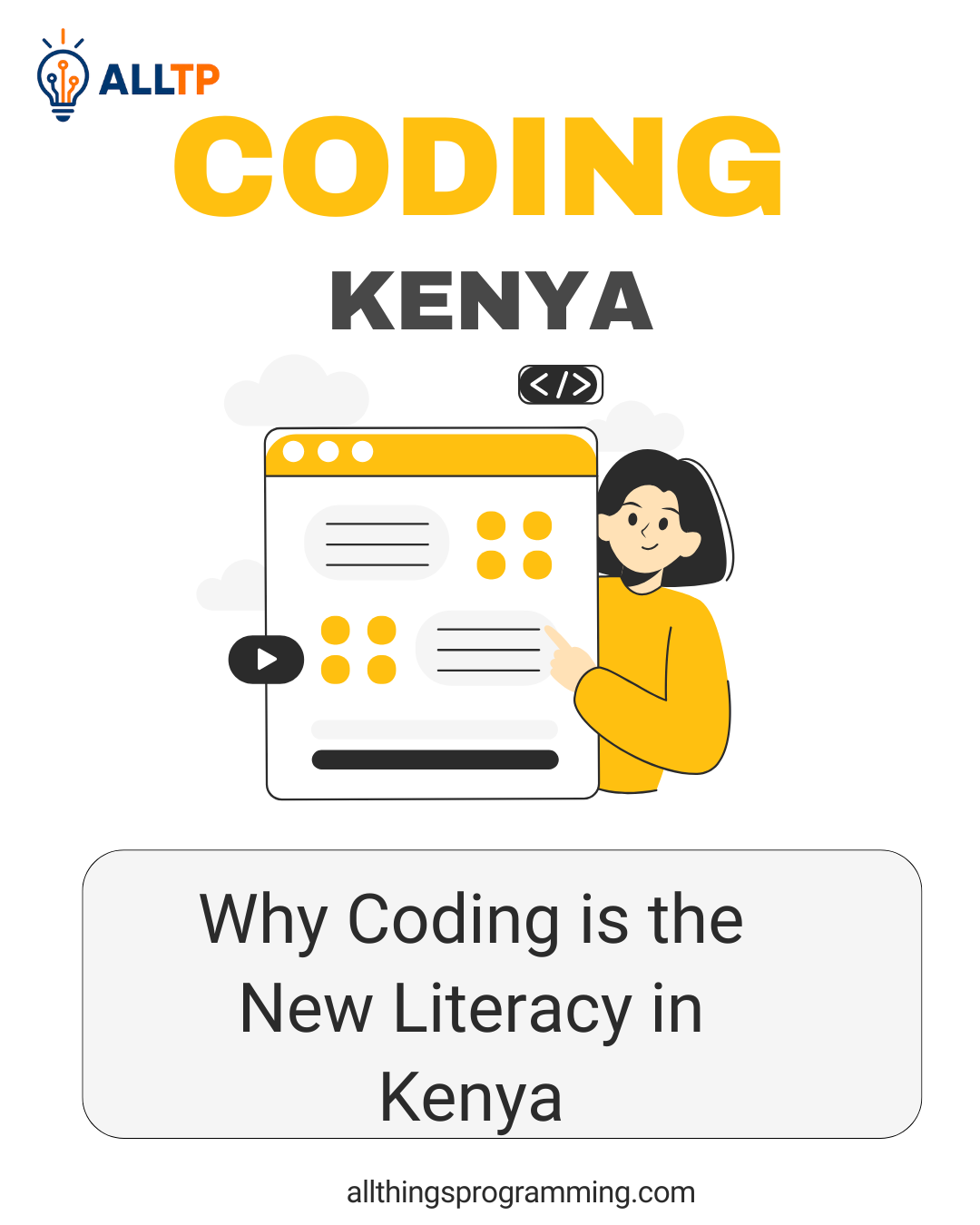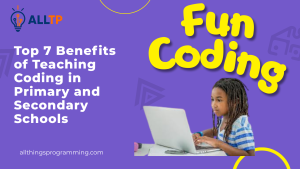In 2023 alone, Kenya’s ICT sector created over 250,000 new digital job opportunities, signalling a massive shift in the country’s economic landscape. Amid this tech revolution, young innovators like 13-year-old Wawira from Nairobi, who built her first mobile app to help students track homework, are proving that age and even location are no barriers to tech-driven success.
Coding, at its core, is the language of computers. It’s how we give instructions to machines, build apps, create websites, and power everything from smartphones to smart homes. But beyond the technical side, coding for kids also teaches logic, creativity, and problem-solving skills that extend far beyond a screen. At All Things Programming, we’re committed to equipping the next generation with these skills through engaging, hands-on learning experiences tailored to young minds.
In Kenya’s rapidly digitizing economy, coding for kids is no longer an optional skill; it is a new form of literacy essential for future success. Enroll your kids today at our Bootcamp and have them gain hands-on coding experience, build problem-solving skills, and unlock their creative potential, preparing them to thrive in the digital world.
In today’s digital world, “literacy” is no longer limited to reading and writing. It now includes the ability to navigate, understand, and shape technology. Just as reading once unlocked knowledge and opportunity, coding is the new key to participating in and leading the digital economy.
The Changing Definition of Literacy
A. Traditional Literacy: Reading, Writing, Numeracy
For generations, literacy was defined by a person’s ability to read, write, and perform basic arithmetic. These foundational skills were essential for navigating school, work, and society. In Kenya, increasing access to basic education has improved traditional literacy rates, empowering more people to participate in national development.
B. Digital Literacy as a Requirement in the 21st Century
However, the 21st century has brought new demands. Today, being literate means more than just reading a book, it means knowing how to use digital tools, search for information online, and communicate through email or social media. This expanded skill set is what we call digital literacy, and it has become essential for success in education, business, and everyday life. From online banking to e-learning, digital fluency now determines how people engage with the world.
C. Why Coding Fits Into This Evolution of Literacy
As our interactions with technology deepen, coding emerges as a core part of digital literacy. It’s no longer a skill reserved for computer scientists; it’s a new form of expression and understanding. Just like reading helps us interpret written information, coding helps us understand and shape the digital tools around us. Whether it’s programming a robot, designing a website, or automating a task, coding gives individuals the power to create technology, not just consume it. In this way, coding becomes a natural evolution in what it means to be literate in our digital age.
The Rise of Technology in Kenya
A. Kenya’s Growing Tech Ecosystem
Kenya has earned a reputation as Africa’s “Silicon Savannah” thanks to its vibrant and fast-growing technology scene. Nairobi is now home to hundreds of startups, innovation hubs, and incubators, fueling the growth of fintech, agritech, health tech, and e-commerce. Projects like Konza Technopolis, a government-backed smart city initiative, aim to transform Kenya into a leading global innovation hub by providing infrastructure for technology companies, data centres, and digital research.
This innovation climate has also led to a surge in coding Kenya initiatives, community programs, schools, and bootcamps focused on teaching coding to children and youth. These programs are equipping the next generation with the skills to thrive in the digital economy and contribute to Kenya’s position as a technology leader in Africa.
B. Increasing Mobile and Internet Penetration
Kenya’s digital transformation is also driven by the widespread availability of mobile technology. With over 65 million mobile subscriptions and rising internet connectivity, even rural communities are gaining access to online platforms. Mobile money services like M-Pesa have shown how digital solutions can leapfrog traditional systems, making Kenya a global case study in tech-enabled financial inclusion. This connectivity opens doors for young people to learn online, build tech skills, and explore new career paths.
C. Government Initiatives Like the Competency-Based Curriculum (CBC)
Recognizing the importance of tech skills, the Kenyan government introduced the Competency-Based Curriculum (CBC), which emphasizes hands-on, skills-based learning. Unlike the traditional rote system, CBC encourages creativity, critical thinking, and digital literacy from an early age. Coding and robotics have been introduced in some schools as early as Grade 4, showing a national shift toward preparing students for a tech-driven future.
D. Role of EdTech and Digital Tools in Learning
The rise of EdTech (Educational Technology) is transforming how Kenyan students access education. Platforms like eLimu, Kytabu, and MwalimuPlus provide engaging, interactive learning materials via mobile apps and tablets. During the COVID-19 pandemic, these digital tools became lifelines for continued learning, highlighting the need for students and teachers to be digitally fluent. Coding programs, both in schools and informal bootcamps, are now helping students develop not just tech skills, but also confidence and creativity.
Why Coding is Critical for Kenya’s Youth
A. Problem-Solving and Computational Thinking Skills
Coding teaches more than just how to write commands, it builds a way of thinking. Through programming, children learn computational thinking, which involves breaking down complex problems into smaller, manageable parts and creating step-by-step solutions. These skills are essential not just in tech careers but in all areas of life, from decision-making to analytical reasoning.
For Kenyan youth, learning to code fosters resilience, logic, and the ability to solve real-world challenges creatively.
B. Empowering Youth to Be Creators, Not Just Consumers of Technology
Most young people today interact with technology daily, using smartphones, social media, and video games. But coding gives them the power to move from being passive users to active creators. Instead of just watching videos or playing games, they can learn to design apps, build websites, or develop games of their own.
C. Opportunities in the Local and Global Digital Job Market
The digital economy is growing fast, and demand for tech skills is skyrocketing. In Kenya, careers in software development, data analysis, cybersecurity, and digital marketing are becoming more accessible. Globally, remote work platforms now allow talented coders from Kenya to access freelance and full-time opportunities with international companies. By learning to code, youth are preparing for high-demand, high-paying jobs that can uplift entire communities.
D. Early Exposure Builds Confidence and Creativity
Introducing coding at a young age gives children the confidence to experiment, fail, and try again, key ingredients for innovation. When kids realize they can build something meaningful through code, it fuels their self-esteem and sparks curiosity. Platforms like Scratch, MIT App Inventor, and Code.org make it fun and interactive, especially for primary and junior secondary learners. This early exposure can inspire a lifelong interest in STEM and open pathways to entrepreneurship, tech leadership, and innovation.
Coding and Education in Kenya
A. Integration of Coding in the CBC Curriculum
Kenya became the first African country to integrate a coding curriculum into its national Competency-Based Curriculum (CBC), approved by the Kenya Institute of Curriculum Development (KICD) Business Daily Africa+10Nation Africa+10NTV Kenya+10. In January 2023, Graceland Schools Nyahururu made history as the first private school to fully roll out the KICD-approved coding syllabus across all grades.
Today, coding is being phased into both primary and secondary classrooms, with public schools piloting the subject in dozens of institutions nationwide.
B. Success Stories from Kenyan Schools and Coding Clubs
Schools such as St. Ann Suresh Raga Girls High School in Thika have integrated coding into classrooms and after-school clubs, teaching languages like Python, HTML, and using platforms like Scratch with mentorship from local tech institutions, Reddit+3Business Daily Africa+3CBC teachers online+3.
The M-Pesa Foundation Academy offers STEAM and coding modules from basic to advanced levels, including robotics and app design, and has seen its learners tackle real-world problems like noise pollution with tech solutions, Business Daily Africa.
Student-led initiatives like Hack Club Nairobi are emerging, too. As one Reddit user shared:
“It’s completely free … open to students aged 12– 18 … part of a global community of over 30,000 young innovators”.
C. Availability of Coding Bootcamps and After-School Programs
Kenya boasts several well-established bootcamp-style learning accelerators. Moringa School in Nairobi, founded by Audrey Cheng, has trained over 4,000 students in coding and tech skills, with a reported 95% graduate employment rate across Africa and beyond The Standard+2en.wikipedia.org+2Reddit+2.
Community-based programs like the Tunapanda Institute deliver free or low-cost tech and coding education to underserved youth in Nairobi’s informal settlements, using offline-first learning tools and even solar-powered labs en.wikipedia.org. These initiatives bridge gaps for youth without reliable internet or formal school access.
D. Barriers: Internet Access, Teacher Training, Affordability
Despite progress, significant challenges persist:
- Infrastructure: Many rural schools lack reliable electricity or internet access, hindering full CBC rollout, even pilot projects in areas like Lodwar have reported such limitations.
- Teacher preparedness: While a government–Google partnership aims to train 42,000 teachers in coding education to reach over 4 million learners, critics note that many educators still feel unprepared or lack confidence in teaching the subject effectively.
- Cost: Implementing coding programs often requires new hardware, software, and resources. Schools must invest in computers, coding kits, and internet access, expenses that can strain budgets, especially in underfunded public institutions. Some schools have benefited from partnerships and donor support to equip labs and subsidise costs .
Social and Economic Impact
A. Reducing Youth Unemployment Through Tech Skills
Kenya faces a significant youth unemployment challenge, with thousands of graduates entering a job market that cannot absorb them. Coding and digital skills offer a way out, creating opportunities for young people to work remotely, freelance, or launch digital ventures. As more businesses adopt technology, demand for web developers, software engineers, data analysts, and digital marketers is growing. By equipping youth with coding skills, Kenya can reduce unemployment and build a more resilient workforce prepared for the jobs of the future.
B. Promoting Innovation and Entrepreneurship
Coding in Kenya empowers youth to turn ideas into solutions. With just a laptop and internet connection, young Kenyans are building apps to solve local problems, from agriculture to education to healthcare. Platforms like Ajira Digital and Kenya’s innovation hubs (like iHub and Gearbox) support these efforts by offering mentorship, funding, and training. Coding fuels entrepreneurship and positions youth not just as job seekers, but as job creators, driving economic growth.
C. Bridging the Gender Gap in STEM (e.g., Girls in Coding)
Historically, girls and women have been underrepresented in science and technology fields. But coding initiatives in Kenya are starting to change that. Programs like AkiraChix, She Codes for Change, and Technovation Kenya are helping girls gain confidence and skills in tech. By creating safe, supportive learning spaces, these initiatives are encouraging more girls to pursue careers in STEM, helping to build a more inclusive and diverse tech industry.
D. Driving Inclusive Growth in Rural and Urban Areas
One of the most powerful aspects of coding is its scalability, it can reach learners across regions, regardless of location. Initiatives like Tunapanda Institute in Kibera and mobile coding labs in rural counties are proving that with the right support, tech education can thrive anywhere. By investing in coding programs in both urban and rural areas, Kenya can ensure that digital transformation benefits all communities, not just a privileged few.
How Parents and Schools Can Support Coding Literacy
A. Encouraging Curiosity and Creativity at Home
Parents play a critical role in nurturing a child’s interest in technology. Simple actions, like asking how a favourite app works, encouraging logical thinking games, or allowing kids to explore digital art, can spark curiosity. By creating a home environment where questions and creativity are welcomed, parents lay the foundation for problem-solving and innovation. You don’t need to be a tech expert to support your child’s journey, just being curious alongside them makes a difference.
B. Choosing Schools or Programs That Teach Coding
As coding becomes part of Kenya’s Competency-Based Curriculum, more schools are incorporating it into their teaching. Parents should consider schools that actively promote digital literacy and offer access to devices, coding clubs, or robotics programs. When possible, enrolling children in holiday bootcamps or after-school coding workshops can provide structured and inspiring learning experiences. Programs like those offered by All Things Programming give learners hands-on experience in a supportive environment, helping them build practical skills while boosting their confidence. Schools that invest in teacher training and STEM resources signal a long-term commitment to preparing students for the digital future.
C. Leveraging Free and Low-Cost Platforms (e.g., Scratch, Code.org)
Access to devices doesn’t have to be a barrier. There are many free or affordable online tools designed to teach kids how to code, even with limited resources. Platforms like:
- Scratch (developed by MIT): Teaches coding through animation and storytelling.
- Code.org: Offers structured lessons in both block-based and text-based coding.
- Tynker and Khan Academy: Provide beginner-friendly coding courses.
These platforms work well with minimal supervision, making them ideal for home use, even with basic internet access or on mobile devices.
D. Partnering with NGOs and Local Tech Hubs
In Kenya, numerous community-based organisations and innovation hubs are making coding education accessible. Parents and schools can collaborate with groups like Tunapanda Institute, AkiraChix, KidsComp Camp, or Ubunifu Academy to bring coding opportunities closer to their children. These organisations often provide mentorship, hands‑on training, and even access to equipment for underserved learners. Local partnerships can bridge resource gaps and build a stronger, tech‑enabled community.
For insights into how university partnerships expand access to computer science education, take a look at the Computer Science Teaching & Learning Collaboratory at Rutgers University, which works with schools to design equity-driven, culturally responsive CS programs for underserved youth.
The Future of Kenya is Digital
A. Kenya’s Vision 2030 and Digital Economy Aspirations
Kenya’s long-term development plan, Vision 2030, positions the country as a middle-income, globally competitive economy powered by knowledge and innovation. Central to this vision is the growth of a robust digital economy. Through initiatives like the Digital Economy Blueprint and investments in infrastructure such as Konza Technopolis, Kenya is laying the foundation for a future where ICT drives job creation, service delivery, and national development. Preparing young people with coding skills is key to ensuring they can participate fully in this digital transformation.
B. Global Competitiveness and Innovation
In an increasingly interconnected world, nations that lead in digital innovation will shape the future. For Kenya to stay competitive, its workforce must be equipped with 21st-century skills, including coding, data science, and digital design. By building a strong pipeline of tech-savvy youth, Kenya can strengthen its position as a regional leader in innovation, attract international investment, and export homegrown digital solutions to global markets.
C. Coding as a Core Life Skill in a Tech-Driven World
Just as reading and writing were essential for participation in the industrial era, coding is becoming a basic life skill in the digital age. From smart farming and e-commerce to online education and AI, nearly every sector is being transformed by technology. Learning to code is no longer just about getting a job in tech, it’s about understanding the systems that shape our world. For Kenya’s youth, coding offers not only economic opportunity but also the ability to shape their communities and solve local problems through innovation.
Conclusion
As Kenya strides confidently into a digital future, coding has emerged as more than just a technical skill, it is the new literacy of our time. From empowering young minds to solve real-world problems to creating pathways out of unemployment and into innovation, coding is transforming how Kenyan youth learn, think, and build.
By integrating coding into classrooms, supporting after-school programs, and embracing digital tools at home, we can ensure that every child, regardless of background, has the chance to thrive in a tech-driven world. The opportunity is here, the momentum is growing, and the time to act is now.
Let’s invest in coding literacy today so Kenya’s youth can lead the digital economy of tomorrow.
Enroll your child at All Things Programming and give them a head start in tech with fun, practical coding for beginners lessons designed for young minds. Whether they dream of building apps, games, or websites, this is where their journey begins. Don’t wait, empower your child to create the future!




